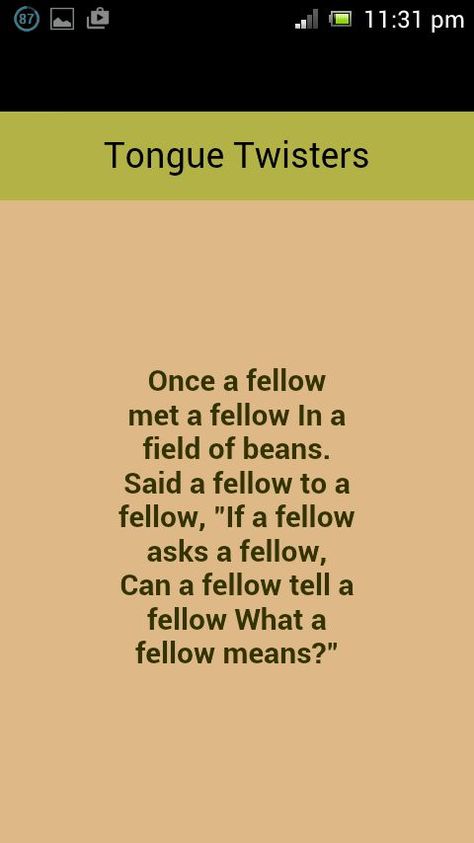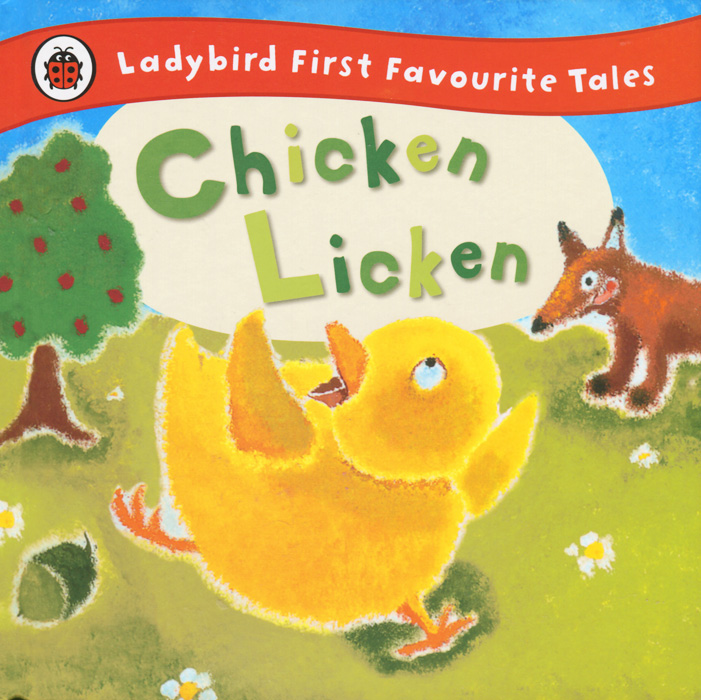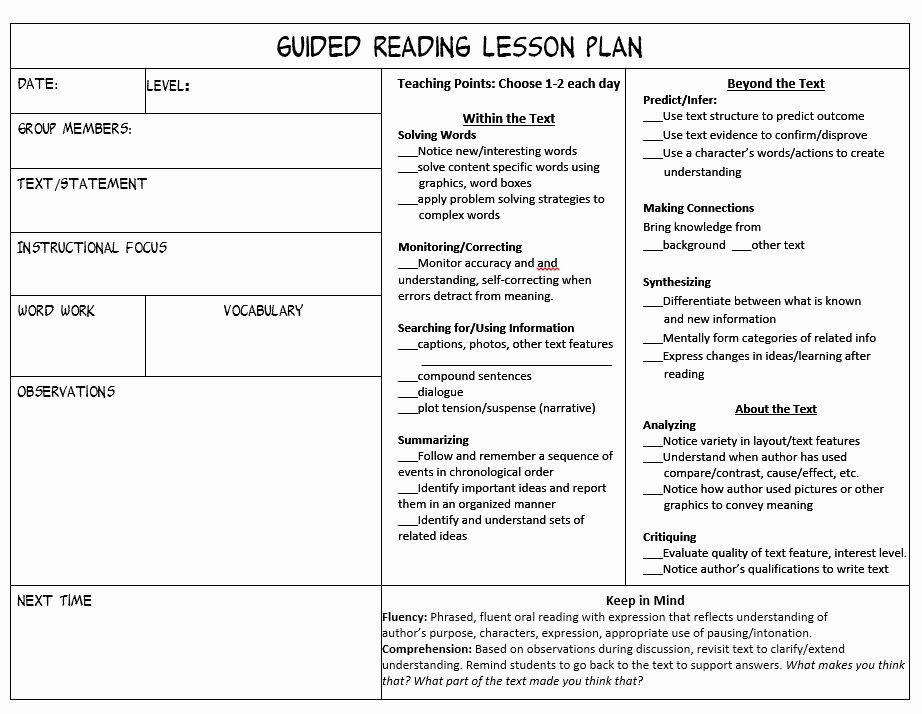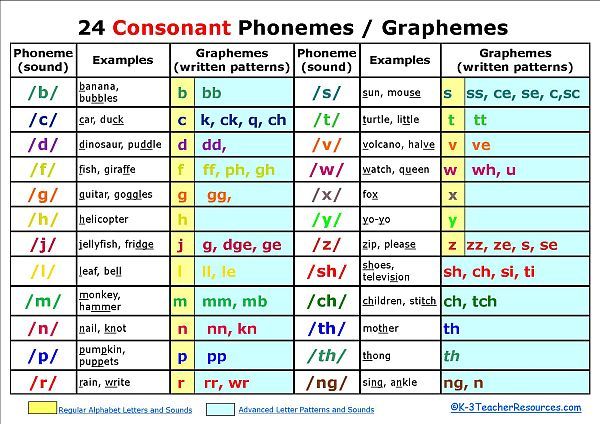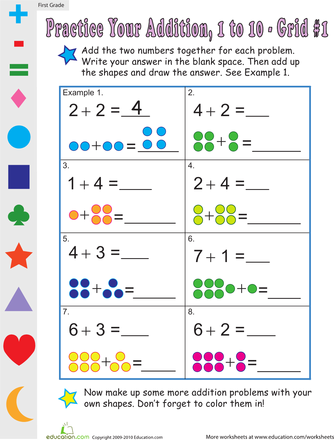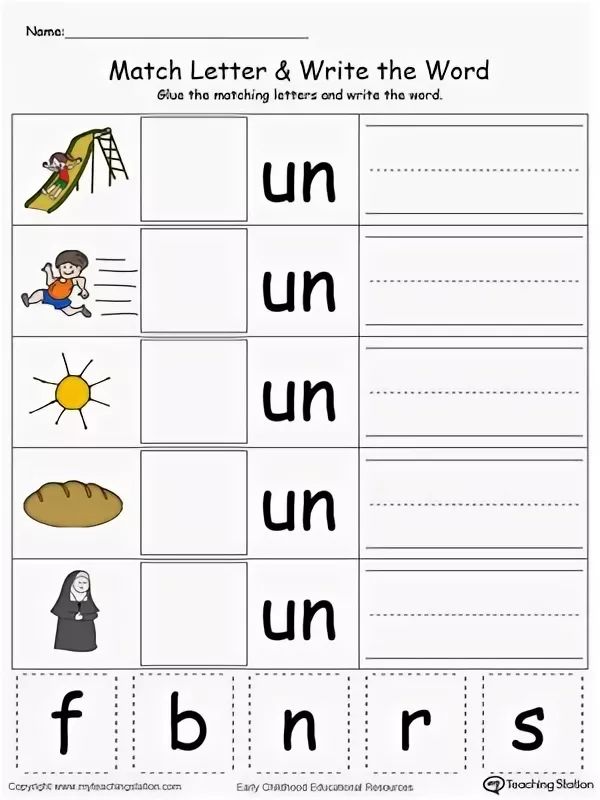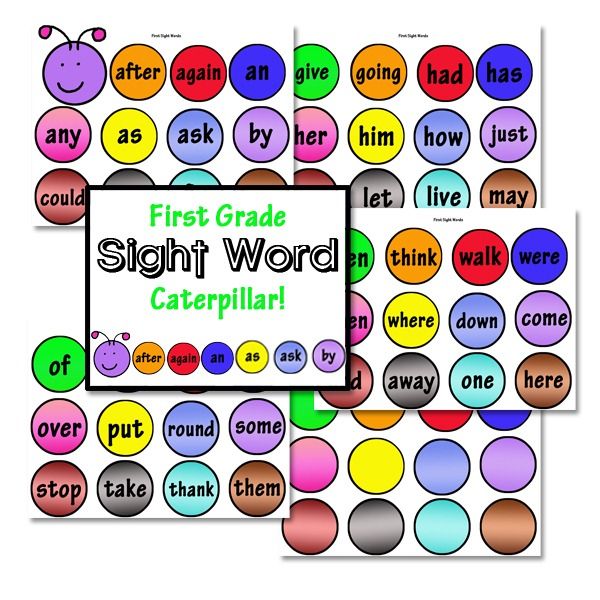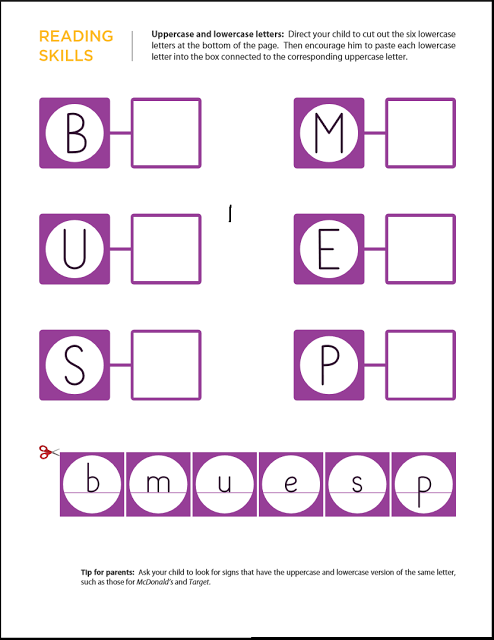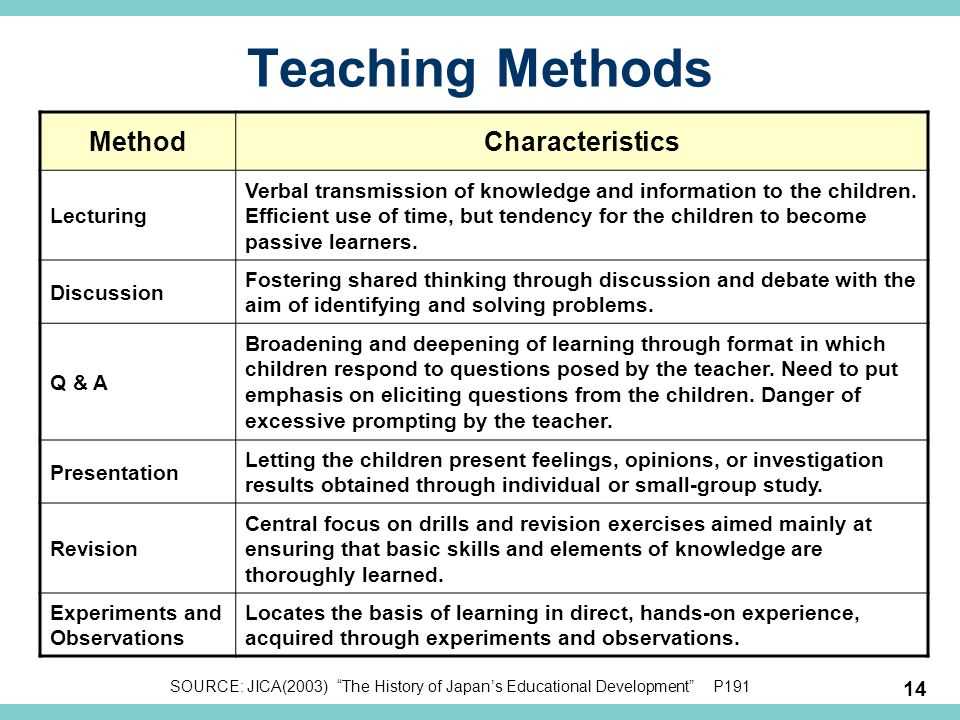How many sight words should a third grader know
Sight Words for Third Grade
Is your 3rd grader struggling to read fluently? Practicing sight words is a great way to help third graders read faster and more consistently, and improve their confidence in their reading skills. Here’s what you need to know about sight words for third grade so that you can help your child be successful with sight words.
Pin this for reference!I only recommend products that I use and that we love. This post may contain affiliate links and I may earn a small commission for purchases made through those links.
What are Third Grade Sight Words?
Sight words are words that a child can read instantly, without needing to sound them out first. There are two different kinds of sight words on every third grade list.
High-Frequency Words are common words that a child can sound out using their phonics knowledge. Because these words occur so often in text, they are important words for kids to be able to recognize without needing to sound them out.
Irregular words can’t be decoded using phonics. Kids will need to commit these words to their long-term memory to be able to read them.
Why Do Third Graders Need to Learn Sight Words?
There are many reasons why sight words are important when learning how to read. These include:
- When kids recognize sight words, this allows them to be able to read faster. They won’t need to sound out every word in the text.
- Memorizing sight words makes reading easier as well.
- When third graders understand sight words, they will be able to read with more confidence.
- Kids who can read more quickly and confidently tend to enjoy reading more.
- When kids know more sight words, they will be able to read more independently as well.
Students need a solid foundation of common sight word knowledge, coupled with strong phonics instruction as well, to become good readers. Kids should learn to read using both sight words and phonics.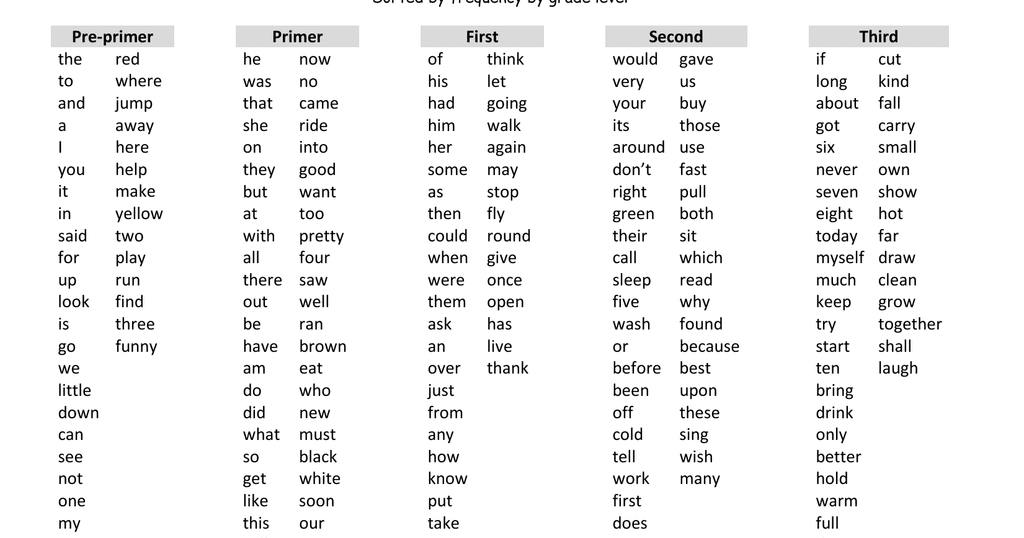
3rd Grade Sight Word Lists
Dolch Sight Words List
The Dolch Sight Word list is a list of 220 words, which are divided up by grade level including preschool, kindergarten, 1st grade, 2nd grade, and 3rd grade. There is an additional list of 95 of the most common nouns. These lists include 80% of the words found in children’s books and 50% of the words in books overall.
Dolch Words for Third Grade
The Dolch third grade sight words list includes 41 high-frequency and irregular sight words. They are, in alphabetical order:
about, better, bring, carry, clean, cut, done, draw, drink, eight, fall, far, full, got, grow, hold, hot, hurt, if, keep, kind, laugh, light, long, much, myself, never, only, own, pick, seven, shall, show, six, small, start, ten, today, together, try, warm
Grab a Free Printable List of the Dolch Sight Words for 3rd Grade Here!
These printable worksheets will help you get started with learning the 3rd grade Dolch sight words.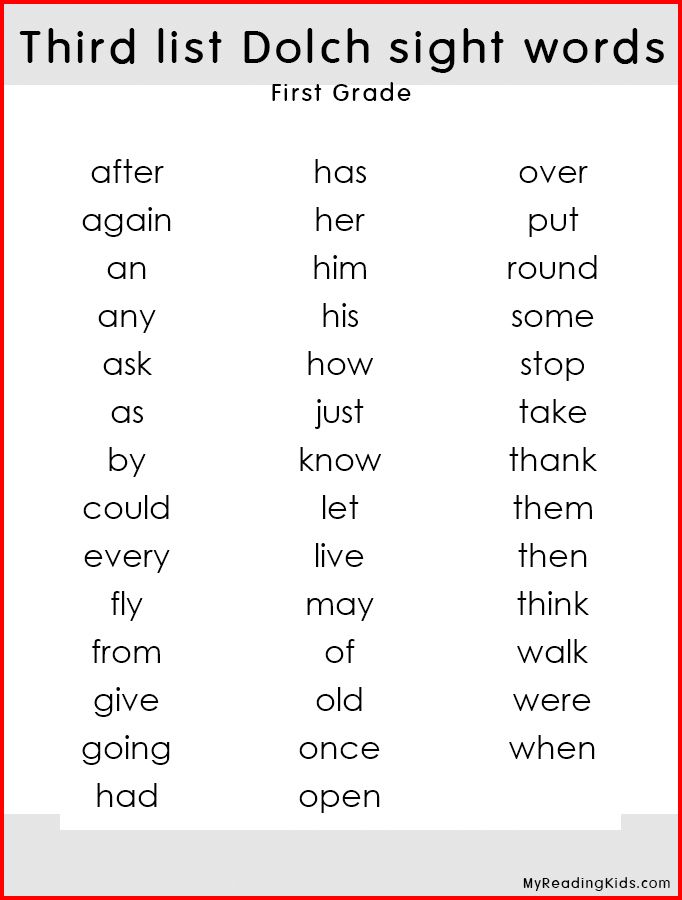
Dolch Sight Word Lists
These sight word lists will make it easy to teach Dolch sight words in your homeschool. This pack comes with bonus checklists and flashcards for each level as well! All the words for preschool through 3rd grade are included, so you can use this resource with multiple kids- or save it to use again and again!
I Need This!
Fry Sight Words
The Fry sight word list is an update to the list of Dolch Words that was created by Dr. Edward Fry. The lists include 1000 commonly used words, and the words are organized in groups of 100. The words are not labeled by grade levels like the Dolch words are, so 3rd grade students can work through the list at their own pace.
The Fry sight words list includes 90% of the words kids will find in the books they read.
Fry Words for Third Grade
The third Fry word list includes 100 sight words:
above, add, almost, along, always, began, begin, being, below, between, book, both, car, carry, children, city, close, country, cut, don’t, earth, eat, enough, every, example, eyes, face, family, far, father, feet, few, food, four, girl, got, group, grow, hard, head, hear, high, idea, important, Indian, it’s, keep, last, late, leave, left, let, life, light, list, might, mile, miss, mountains, near, never, next, night, often, once, open, own, paper, plant, real, river, run, saw, school, sea, second, seem, side, something, sometimes, song, soon, start, state, stop, story, talk, those, thought, together, took, tree, under, until, walk, watch, while, white, without, young
Create Your Own Third Grade Sight Word List
Many families prefer to create their own sight word list for their 3rd grade students.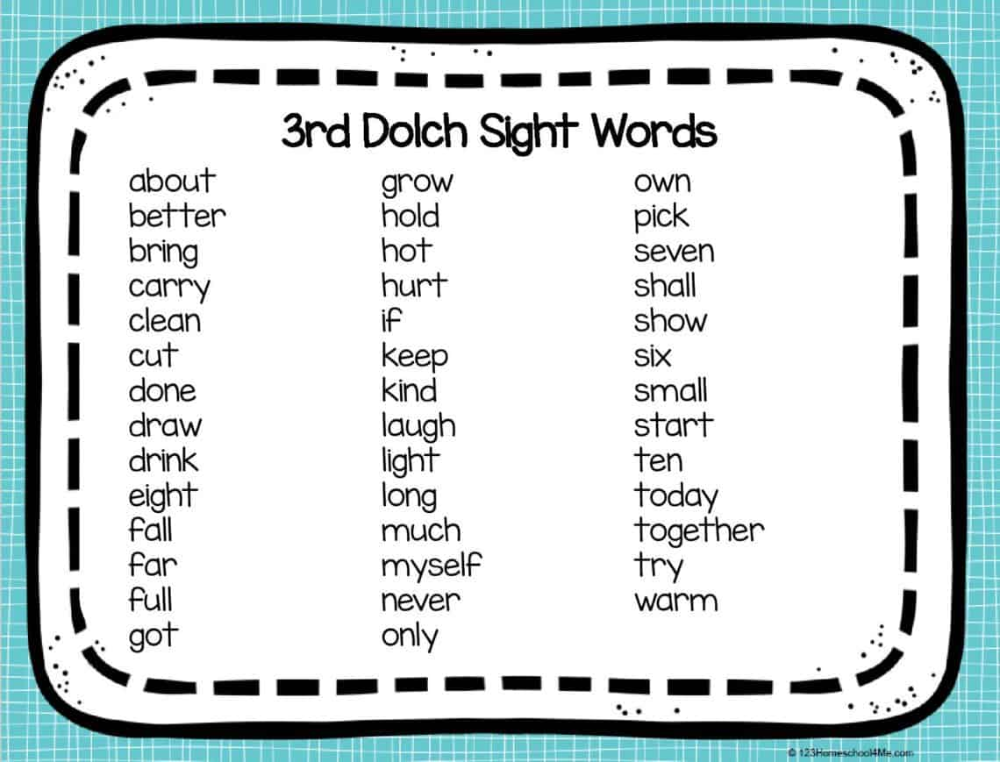 You can create your own third grade word list by combining the Dolch and Fry word lists and adding any additional words that you want your child to be able to recognize.
You can create your own third grade word list by combining the Dolch and Fry word lists and adding any additional words that you want your child to be able to recognize.
How many sight words should a third grader know?
The Dolch Sight Word lists for preschool through 3rd grade include a total of 220 commonly used words. By the end of third grade, your child should know all the words on the Dolch list. If your child has not accomplished this by the end of the year, you can continue working on sight words in 4th grade.
Tips for Teaching Third Grade Sight Words
Teaching reading, including sight words, is an important part of homeschooling. These tips will make it easier.
What Order Should I Teach the Sight Words?
You can teach the sight words in any order. A good way to do this is to teach the words in order of frequency, starting with the most commonly used words first.
How Many Sight Words Should My Child Learn at Once?
Most kids learn best when they practice sight words in small groups, rather than trying to tackle the whole list at once.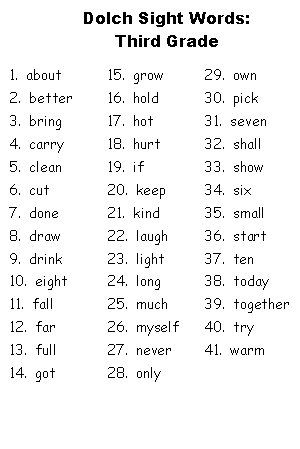 Introduce just a few sight words at a time, and make sure your child has lots of practice and feels comfortable with those words before adding new ones.
Introduce just a few sight words at a time, and make sure your child has lots of practice and feels comfortable with those words before adding new ones.
Are Sight Words Enough to Help My Child Learn to Read?
Just memorizing sight words is not enough to help your child become a strong reader. Lots of research shows that kids learn to read best when they memorize sight words in combination with a strong phonics-based reading program. You can learn more about sight words vs phonics here.
Helpful Products for Learning 3rd Grade Sight Words
Fun Sight Word Activities
One of the best ways to teach sight words to third graders is with fun games and activities. Here are a few ideas to include in your lesson plans that will help kids practice their sight words in a fun way.
Trace, Cover and Check
Fold a piece of paper to make 3 columns. Write the high-frequency words that you are practicing in the first column. Ask your child to trace the word.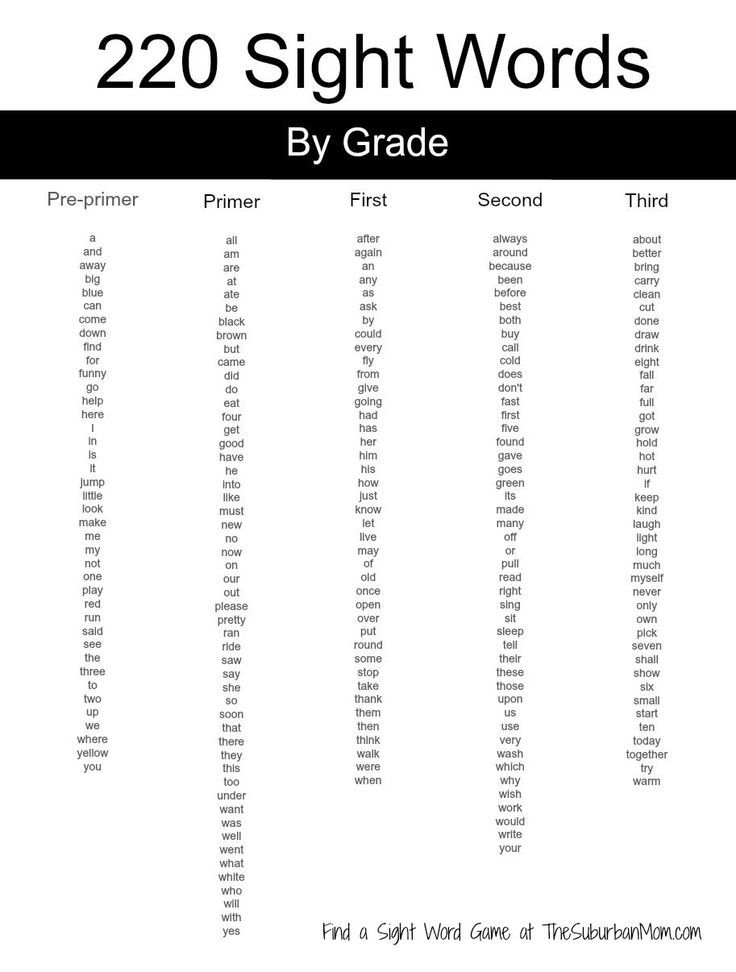 Then, fold the paper so the word is covered and ask your child to write the word. Finally, unfold the paper and check to see if they spelled it correctly. Make any needed corrections in the third column.
Then, fold the paper so the word is covered and ask your child to write the word. Finally, unfold the paper and check to see if they spelled it correctly. Make any needed corrections in the third column.
Sight Word Bowling
Write words from your child’s list on plastic cups. Set up the cups like bowling pins and invite your child to knock them over with a soft ball. After the round of bowling is complete, your child can collect the cups and test their reading skills by practicing the sight words.
Beach Ball Words
Blow up a beach ball. Use a permanent marker to write one sight word on each colored section of the ball. Play throw and catch with the beach ball. Ask your child to read the word that their right hand is touching each time they catch the ball.
Climb the Stairs
Write sight words on sticky notes or index cards. Put one of the sight word cards on each step of a staircase. Ask your child to climb the stairs one at a time, while reading the word on each step.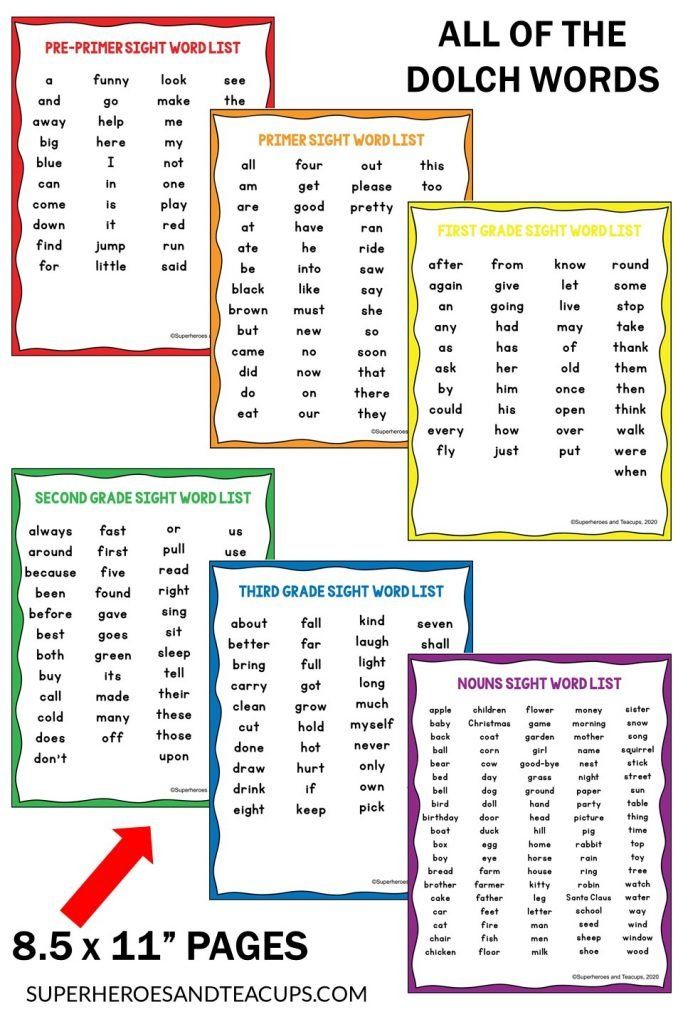
Word Games
Spelling games like a word scramble are a great way to help your child remember how to spell their sight words. You can create simple spelling worksheets for your child using their sight words.
Be sure to check out my huge list of fun ways to practice sight words at home. By implementing these fun sight words learning activities for extra practice, your child will be on his way to becoming a great reader at an early age!
Tips for Success with Third Grade Sight Words
Make Learning Fun
Make sure that your 3rd grader is enjoying practicing reading. Include lots of hands-on activities and fun games to keep things interesting.
Be Patient
Remember that learning how to read takes time. Learning sight words is an important skill, but one that will take lots of practice. Keep encouraging your child as you see their progress.
Be Consistent
When learning new sight words, kids need to practice daily. Make sure that you keep lessons short and make them a part of your daily routine.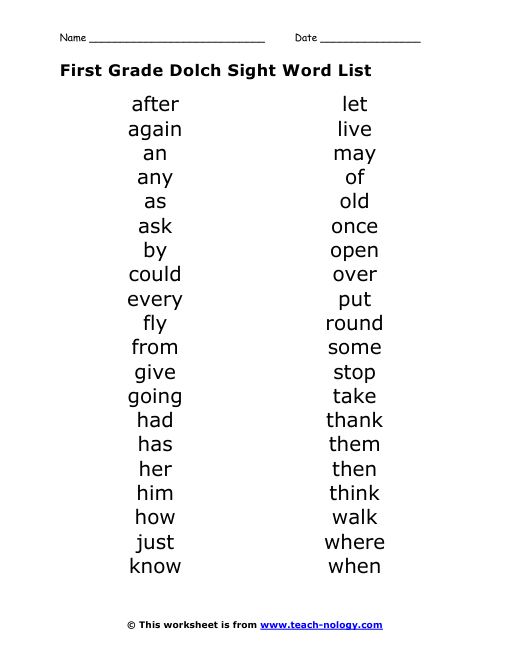
Sight words are an important part of teaching kids how to read. When you practice sight words with your kids regularly, they will become better readers as they gain confidence and fluency with sight words.
Free Printable List of 3rd Grade Sight Words
This PDF file includes a printable list of the Second Grade words, a checklist you can use to keep track of which words your child knows, and a set of Dolch Second Grade Sight Words flash cards to help you practice with your child!
Dolch Sight Word Lists
These sight word lists will make it easy to teach Dolch sight words in your homeschool. This pack comes with bonus checklists and flashcards for each level as well! All the words for preschool through 3rd grade are included, so you can use this resource with multiple kids- or save it to use again and again!
I Need This!
Sight Word Lists for Other Grades
Grab a printable pack of free teaching resources for each grade here:
Preschool
Kindergarten
First Grade
Second Grade
What grade level are sight words?
The first 100 fry words, considered the most frequently occurring in the English language, should be mastered in Grade 1.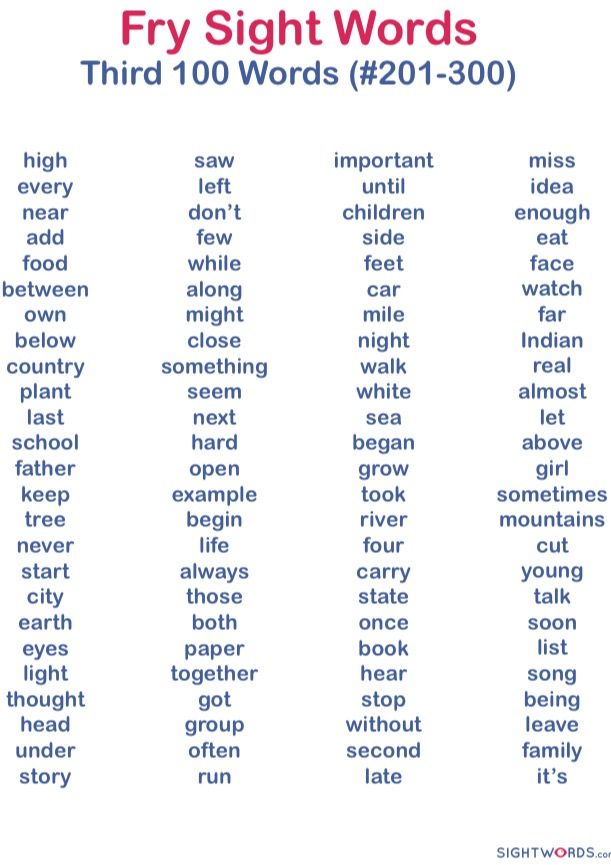 The fry second 100 sight words should be mastered in 2nd Grade. The third 100 words should be mastered in Grade 3.
The fry second 100 sight words should be mastered in 2nd Grade. The third 100 words should be mastered in Grade 3.
| View complete answer on spellingcity.com
What grade uses sight words?
Most children are introduced to sight words in first or second grade when they begin learning how to read. More than 75% of the average children's book is made up of sight words.
Takedown request | View complete answer on readandspell.com
What grade do sight words end?
Children begin learning sight words in kindergarten and continue through first grade. Although there is no set target and all children learn in different ways and at varying speeds, a rough goal to aim for would be 20 sight words by the end of kindergarten and 100 by the end of first grade.
Takedown request | View complete answer on twinkl.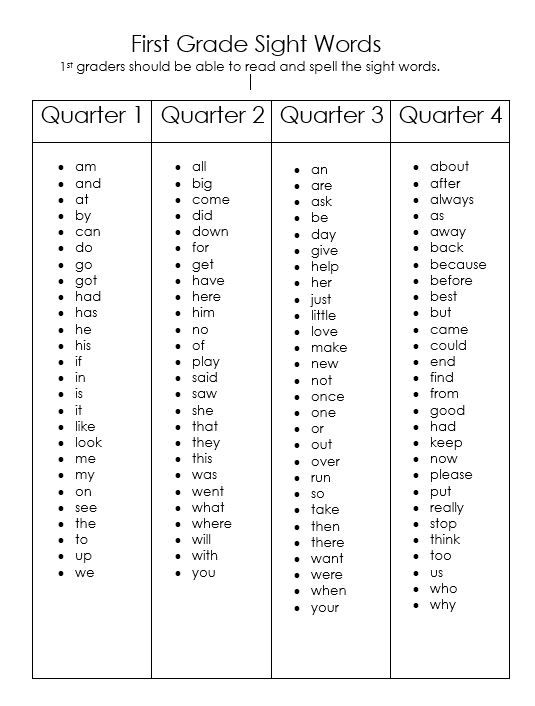 com
com
Are there sight words for 5th graders?
There are 100 examples of fifth-grade sight words to practice before kids enter 6th grade. The list of sight words is divided by their types, Dolch and Fry. On this page, there are also examples of sight words used in sentences and sight word activities.
Takedown request | View complete answer on teachingexpertise.com
How many sight words should a 4th grader know?
**All students are expected to know 1000 Sight Words from the Muhlenberg Sight Word List by the end of fourth grade. Your child practiced these sight words from kindergarten through fourth grade. Throughout their elementary years there was a benchmark they were expected to meet.
Takedown request | View complete answer on muhlsdk12.org
Sight Words Reader Level 1-1 | The Playground | Age 6+ | Things Kids Need To Know
What are sight words for Grade 6?
- admire cyclone fight. love rhythm thigh. ...
- campaign desert who's. groan coarse align. ...
- isle. cruise buoy. ...
- impersonal irresponsible cent. immortal irrational accept. ...
- produce circus compute. progress incision diagram. ...
- mean astronomy Europe. median atlas government. ...
- peninsula vineyard photosynthesis. ...
- depressant classification.
| View complete answer on chino.k12.ca.us
How many sight words should a 3rd grader know?
Children should aim to learn 300 or more sight words, or commonly read words, by the end of the 3rd grade. The purpose of learning sight words is for children to use them in context when they're reading.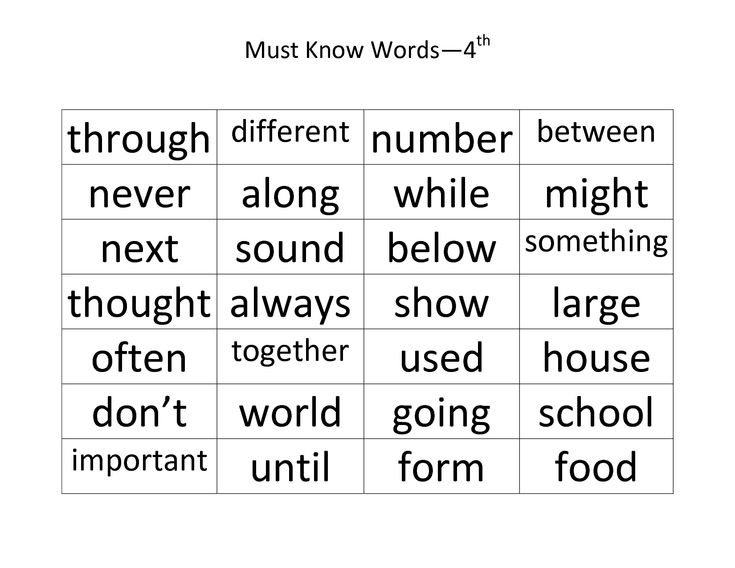
| View complete answer on homereadinghelper.org
Are sight words considered fluency?
When a child is able to immediately and instantly recognize a word, it is a “sight word.” They no longer need to decode it and therefore the word is read automatically. When they are able to do this with most words they read in connected text, fluency is developed.
Takedown request | View complete answer on ortongillinghamonlinetutor.com
Why can't my child remember sight words?
If, after ample repetition, your child still can't remember basic sight words, it could indicate dyslexia, an auditory processing problem, or a visual perception disorder.
Takedown request | View complete answer on readbrightly.com
What words should a third grader be able to read?
Some of the 3rd grade sight words are together, far, bring, only, hurt, keep, own, eight, myself, about, better, drink, laugh, seven, six, cut, done, show, long, small, myself, hot, etc.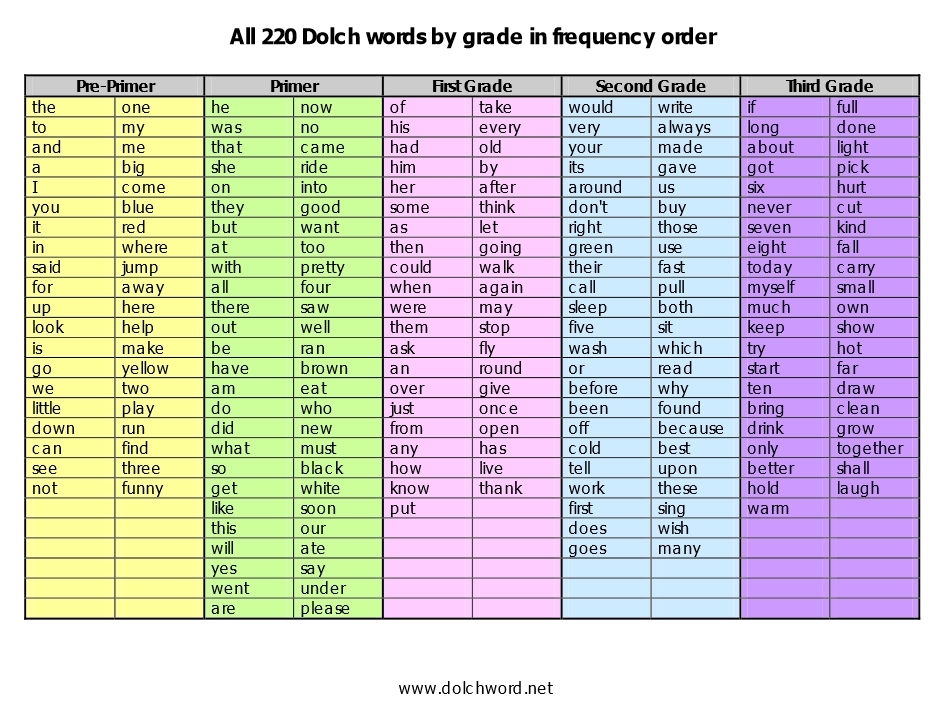
| View complete answer on playosmo.com
How many sight words should 2nd graders know?
A good goal is to learn 220 or more sight words by the end of 2nd grade. The purpose of learning sight words is for children to recognize them instantly while they're reading.
Takedown request | View complete answer on homereadinghelper.org
Do sight words fall under phonics?
The sight word approach usually asks kids to memorize both sight words, which are words that do not follow the rules of phonics, and high-frequency words. These words often do follow the rules of phonics but might be easier to read than to sound out since they appear frequently in written text.
Takedown request | View complete answer on homeschooling4him.com
What age do you teach sight words?
Most children will be able to learn a few sight words at the age of four (e. g. is, it, my, me, no, see, and we) and around 20 sight words by the end of their first year of school. Knowing the first 100 high frequency sight words will give your child around half of the words they need for reading.
| View complete answer on readingeggs.com
How many sight words should a 1st grader know?
By the end of the first grade, children should know around 200 sight words – with spellings. The kids will often come across these words in the texts they read or speeches they hear. Creatively incorporating these sight words in different activities can help kids become better readers and writers.
Takedown request | View complete answer on splashlearn.com
What should a child know by the end of 4th grade?
Children should be able to read, analyze, compare, and even design their graphs. Fractions are also regarded as an important topic for fourth-grade students. You can anticipate your youngster to master the following fractions: Addition and subtraction.
| View complete answer on thetechedvocate.org
Is 4th grade hard or easy?
For many kids, fourth grade can be a hard year. There are a lot of changes in teaching from third to fourth grade. School expectations take a big leap forward. Friendship becomes more important, and cliques tend to get more common around fourth grade.
Takedown request | View complete answer on understood.org
What is a skills of a Grade 4 child?
To work on these skill areas, they're expected to be able to: Explain what multiplication and division are. Know the times tables up to 12 and multiply numbers by 10. Use addition, subtraction, multiplication, and division to solve word problems involving more than one step.
| View complete answer on understood.org
How many sight words should an 8 year old know?
A good goal, according to child literacy expert Timothy Shanahan, is that children should master 20 sight words by the end of Kindergarten and 100 sight words by the end of First Grade. Q: Should I be teaching my child sight words instead of phonics?
Takedown request | View complete answer on sightwords.com
What percent of 3rd graders can't read?
Léelo en español. California fourth graders trail the nation in reading, and half of its third graders, including two-thirds of Black students and 61% of Latino students, do not read at grade level.
Takedown request | View complete answer on edsource.org
What is the fastest way to teach sight words?
5 Ways to Make Learning Sight Words Easier for Your Kids
- Tip 1: Expose your child to sight words early on.
- Tip 2: Make read-alouds more interactive.
- Tip 3: Engage all of their senses.
- Tip 4: Sort sight words into categories.
- Tip 5: Read and play with sight words daily.
| View complete answer on scholastic.com
What is a sight word Grade 1?
Sight words are words that appear frequently in most of the text kids read, but can't easily be sounded out. Learning to recognize sight words through—you guessed it—sight is the easiest and quickest way for early readers to progress and become confident.
Takedown request | View complete answer on education.com
What are the 52 sight words?
all, am, are, at, ate, be, black, brown, but, came, did, do, eat, four, get, good, have, he, into, like, must, new, no, now, on, our, out, please, pretty, ran, ride, saw, say, she, so, soon, that, there, they, this, too, under, want, was, well, went, what, white, who, will, with, yes.
| View complete answer on pintsizedtreasures.com
What are sight words for grade 2?
Some of the 2nd grade sight words are, listen, around, clock, pretty, children, idea, since, answer, about, float, flow, first, second, sister, brother, father, mother, grandmom, granddad, jump, question, young, old, etc.
Takedown request | View complete answer on playosmo.com
← Previous question
How strong is a gorillas bite?
Next question →
How to seduce a girl without saying anything?
What a child should know in 3rd grade
Tips for parents… What a child should know in 3rd grade. If you have information about what your child should know and be able to do, it will be easier for you to help him, control him and get the desired result...
- know names of components addition and subtraction
Sum: Addendum + addendum = sum value.
![]()
Difference: Minuend - Subtract = difference value.
Perimeter is the sum of all sides Area is a value that shows how much space a figure occupies.
- be able to find the perimeter. For example, A rectangle has a length of 5 cm and a width of 3 cm. Find its perimeter. "P = 5 + 5 + 3 + 3 = 16 cm OR P = ( 5 + 3) x 2 = 16 cm"
To find the perimeter , you need to add all the sides OR add the length and width and multiply it all by 2.
P = (a + b) x 2 where a is the length and b is the width.
- be able to find the area of a rectangle. For example, A rectangle has a length of 5 cm and a width of 3 cm. Find its area. (S = 5 x 3 = 15 sq. cm)
To find the area, multiply the length by the width.
S = a x b where a is the length and b is the width.
- know the multiplication table and out-of-table multiplication and division (13x5, 205:5)
- calculate multi-digit numbers
- calculate the values of numeric expressions containing 2-3 actions (with and without brackets)
- solve equations and inequalities;
- express the length, mass, area of measured objects using different units of measurement;
- express time using different units
- solve compound problems in 2-3 steps
- solve simple problems at speed
We solve the problems in mathematics (grade 3) and solve the problems of finding the area and perimeter
Russian language
(for example, Hint , where A - ending, prompt - basis , tale - root, under - prefix, to - suffix).
The root is the common part of all related words. The ending is the part of the word that is being changed, or the part of the word that is being changed. For example, a girlfriend, no girlfriend, thinking about a girlfriend, good friend. The base of is everything but the end. The prefix is the part of the word that comes before the root. The suffix is part of a word. which comes after the root.
- must know and freely identify parts of speech (noun, adjective, verb, pronoun, preposition, conjunction):
The noun is a part of speech, which means the subject and answers the questions who? or what?. (e.g. doll, joy, spring, table, cat)
Adjective is a part of speech which means is a sign of object and answers questions what?, what?, what? and others.
(e.g. beautiful, white, fluffy, cheerful)
The verb is a part of speech, which denotes the action of the subject and answers the questions what is he doing?, what will he do? and others. (e.g. run, jump, teach, draw)
The pronoun - is a part of speech, which is indicates objects, signs, quantity, but does not name them, that is, it replaces the noun, adjective, numeral and verb. (for example, we, you, he)
The preposition is an auxiliary part of speech that connects words. (e.g. at home, after a friend)
Conjunction is an official part of speech that links parts of a sentence together. (for example, Carrots and cabbage ripened in the garden. It is cold in winter and hot in summer.
)
- must know and freely identify the members of sentence (the main ones are subject and predicate, the secondary ones are addition, circumstance, definition, union, preposition).
- must know and freely determine the declension of nouns
- must know and freely determine the case of nouns
- know spelling:
- Spelling words with paired consonants at the end of a word and in the middle of a word gait, move - walk
- Spelling of words with doubled consonants: terrace, collection
- Checked unstressed vowels in the root of the word: became heavier
- Separating b: blizzard, wind
- Separating solid sign: (b) arrived
- Spelling of words with unpronounceable consonants: lovely - lovely
- Spelling of noun endings 1, 2, and 3 declensions in various cases:
Main: Mistaken endings And or E? Remember: for nouns of the 1st declension, case endings are E, and in R.
p. - AND ; nouns have 2 declensions case endings - E ; 3rd declension nouns have case endings - AND !
Words in -IYA, -IE are declined according to the rules of 3 declensions, that is, case endings -I (at lecture)
8. Compound words: helicopter, earthquake
9. Unchangeable prefixes on A and O: entered, approach
10. Writing suffixes: small, white, height, grandmother
11. Spelling of nouns with hissing at the end: night, beam
12. Endings of adjectives in singular and plural in I.p.: blue, blue, blue, blue
13. Generic verb endings: the sun has risen, the girl has risen, the student has risen, the boys have risen
14. Prefixes and prepositions (there are no prepositions before verbs): went
15. NOT with verbs: did not see, BUT was indignant, hated.
Tags: mathematicsRussian language advice
Recommendations for parents whose children enter the 1st grade
When they talk about the readiness of children for learning, they mean 3 main components:
1. physical readiness
2. pedagogical readiness,
3. psychological readiness.
1. Physical readiness is
- physical maturation of the organism;
- resistance to loads;
- flexibility to adapt to the new regime.
Good health is the basis for future schoolchildren. Long "sitting" leads to curvature of the spine, visual defects. Therefore, chest clamps in children will remove games - sports and mobile. It is useful to play the game "Velcro", throwing at the target, playing sports (tennis).
Primary school teachers note that the problem in teaching is the unwillingness of the hand to write. Research by Professor Koltsova showed that speech activity develops from impulses coming from the fingers. Therefore, it is useful for children:
1) massage the fingers;
2) play "Designer", "Mosaic";
3) cut out of paper;
4) sculpt;
5) knit;
6) sort through toys with polka dots inside;
7) play music.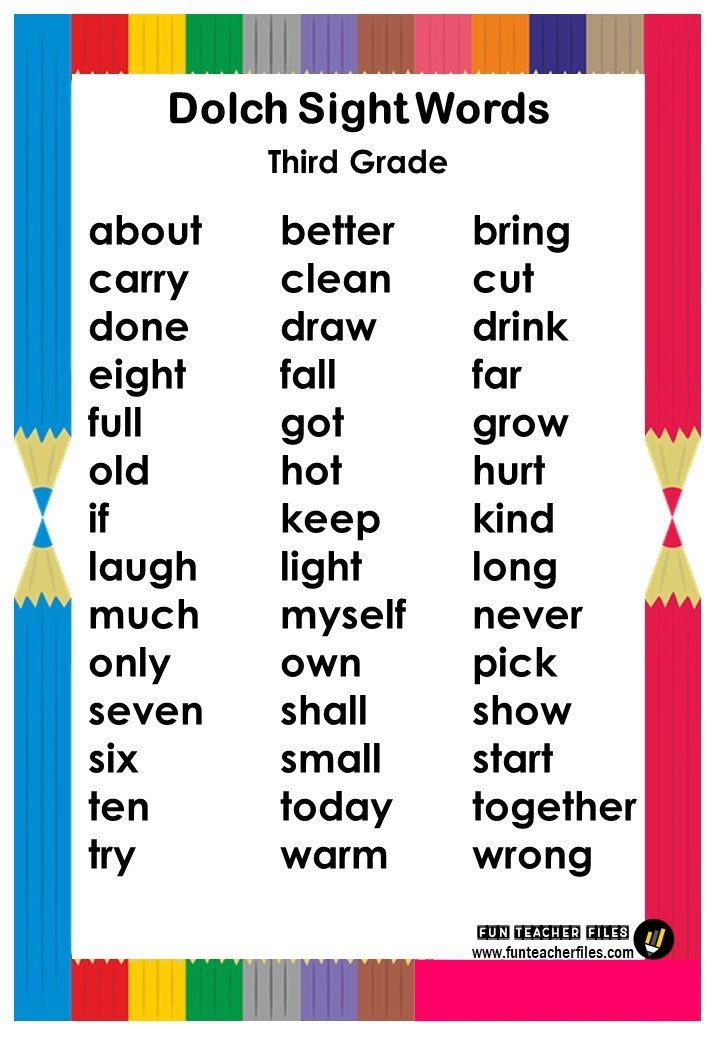
2. Pedagogical readiness is
elementary introductory skills in reading, writing, mathematics, the world around. Therefore, it is useful:
1) read more to children. Introduce them to the classics of children's literature.
2) children should be able to retell the text, correctly convey
the sequence of events.
3) if your child has “mirror writing”, do not be afraid. It is necessary to fix
the image of the letter, i.e. sculpt a letter from plasticine, paint it. Compose from sticks.
3. Psychological readiness is
readiness of mental processes (development of memory, thinking, attention). Memory exercises:
1) Learn poetry with your children.
2) Games “Flies - does not fly”, “What has changed?”, “Find the difference”, etc.
3) Test - game “10 words”. You offer the child 10 words and ask them to repeat them immediately, after 1 minute, after 40 minutes. The child must tell you at least 7 words out of 10.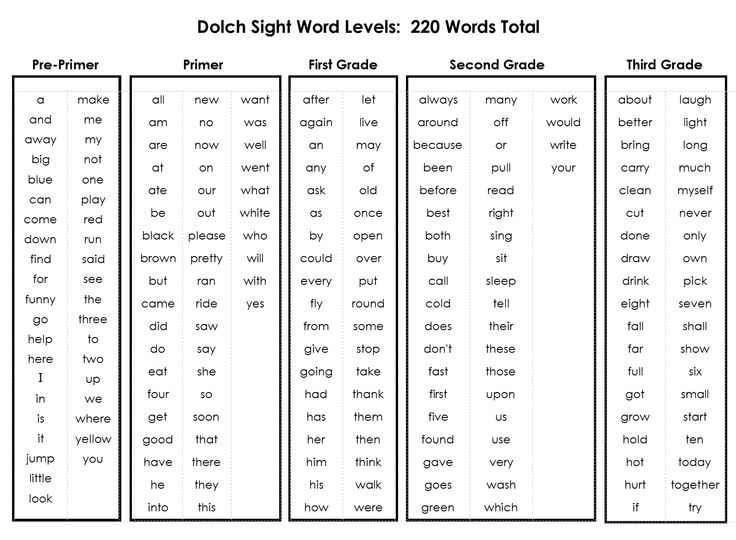
4) Exercises for the development of thinking:
1) "Make a picture" - from split pictures (puzzles).
2) Guessing riddles.
3) Make up a story:
- orange juice poured out of the tap in the kitchen;
- you have become small, like an ant, etc.
4) The game "What is made of what?"
5) "What is superfluous?" (e.g. hare, squirrel, camel, peacock, fox).
6) Determination of quantitative and qualitative ratios of objects
(left - right, already - wider, more - less, closer - further, younger -
older).
Interest in new knowledge, desire to learn something new is important for your child. Your positive attitude towards school will help your child to adapt to school faster. Therefore, conversations about the school, about the rules of behavior at school are necessary for your child. Talk to your child about your childhood, remember instructive and funny stories from your school life. Play with your child at school (14-20 minutes each).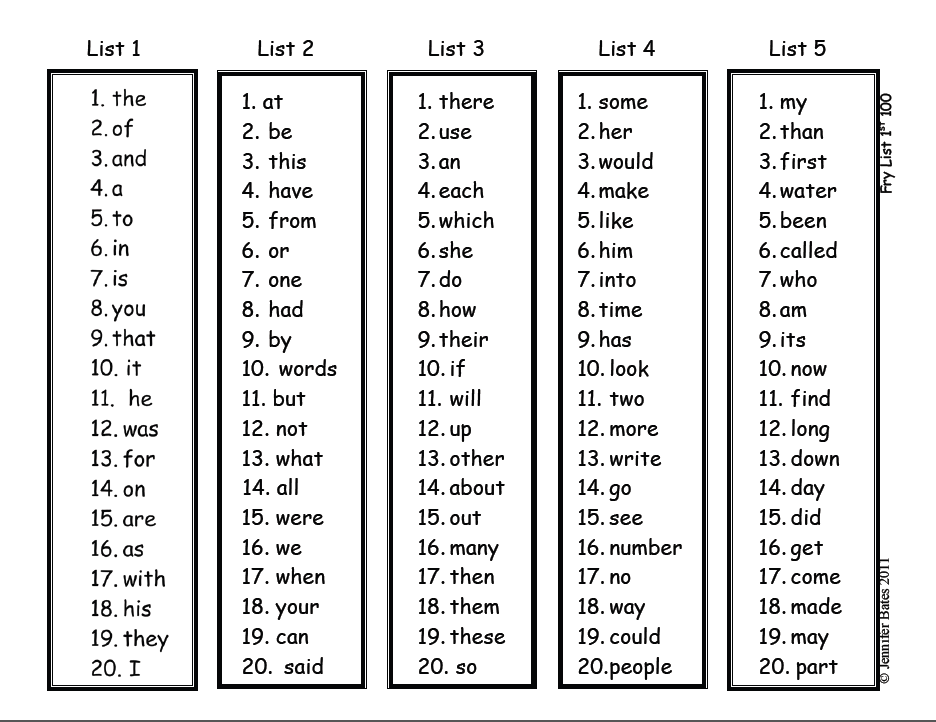 This will relieve the child's anxiety. Teach your child how to self-assess. If the child has a lot of failures, then help to cope with them and show new ways to correct mistakes.
This will relieve the child's anxiety. Teach your child how to self-assess. If the child has a lot of failures, then help to cope with them and show new ways to correct mistakes.
Include your child in work activities, teach them how to take care of their belongings, not to scatter them, keep them in order, monitor their workplace. This is how you develop a sense of responsibility. This quality is necessary for your child to perceive school duties with dignity.
Teach children to communicate, form in them a positive attitude towards people around them, towards the world, towards themselves.
We have the same goal - the well-being of our children.
We prepare children for school. What does it mean?
Going to school is a very important event in the life of a child and his parents.
How a child is prepared for school by the entire previous preschool period of development will depend on the success of his adaptation, entering the regime of school life, his educational success, his psychological well-being.
How to prepare a preschool child for a new stage of his life? What knowledge and skills should tomorrow's student have?
The level of development of the child, his upbringing largely depends on the family. But the main thing here is not to go too far. Some parents try to make their child a child prodigy almost from the cradle, satisfying their own ambitions and unfulfilled dreams. As a result, only the child suffers. It is one thing if the parents themselves are teachers and know how to properly train a preschooler, what he should know and be able to do.
But often parents simply stuff their baby with encyclopedic knowledge, believing that this is the main thing for the child. And as a result, teachers have to retrain such children, because they simply do not know how to hold a pen in their hand.
Teachers often face another extreme, when parents overdid it - when a child enters school, he already knows how to read, count, write well, that is, thanks to the efforts of his parents, he has already mastered the first grade program.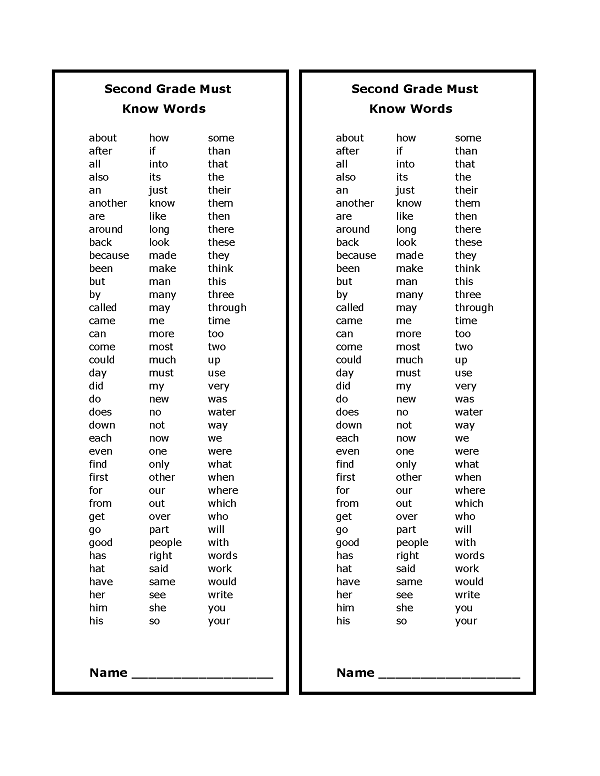 And what to do with such a child in the first grade? Naturally, in this case, he will not be interested in going to school, and this will generally discourage him from learning.
And what to do with such a child in the first grade? Naturally, in this case, he will not be interested in going to school, and this will generally discourage him from learning.
So, how to prepare a child for school?
By the time a child enters school, he/she must have self-service skills - combing his hair, dressing and undressing independently, recovering, getting ready for the lesson, be able to ask for help from an adult if necessary. In addition, personal knowledge is mandatory - first name, last name, age, home address (city, street, house, apartment), name and profession of father, mother. The child must have an understanding of the seasons, time of day (day, evening, morning, night), days of the week, domestic and wild animals. Among other things, the child must understand why you need to go to school, why you need to study.
Particular attention should be paid to the development of memory, attention and logical thinking of the child. For example, out of the 10 words named, he must repeat after a while as many as possible (from 6 to 10), you can in a different sequence or be able to repeat the drawing in the cells, generalize objects according to their characteristics, collect puzzles, recite the poem by heart.
Today there is a huge range of literature for parents of preschoolers - copybooks, notebooks, textbooks. However, do not rush things and teach the child everything at once. First, don't teach your child to read and write on their own. Of course, such skills are welcomed by school teachers, however, having taught a child to read or write incorrectly, it will be very difficult for you and his future teachers to retrain him. And while his less able classmates will step forward, your child will stand still in his development. It will be enough to learn the letters with the child, teach him to add syllables, entrust the rest to professionals. We advise parents to pay more attention to the development of memory, motor skills, attention.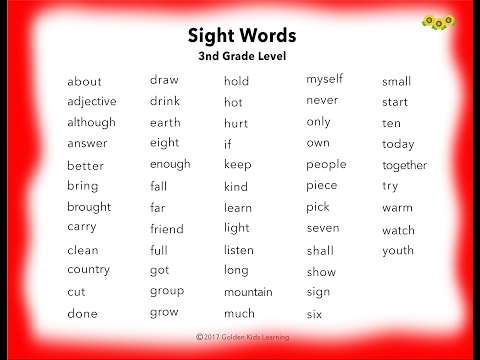
Here are some examples for activities with a preschool child:
- Learn poems by heart and ask them to repeat them after some time (a week, a month).
- During the walk, pay attention to the number of cars in the yard or pigeons near the bench. And after a few hours, ask how many there were. This allows you to develop memory and attention.
- Tell the child a few words and after 10-15 minutes ask them to repeat them. You can start with 5-6 words, gradually increasing their number.
- Show the child some pictures or objects, then ask him to turn away and remove or replace one of them. The child must name the missing item.
- Lay out on the table several objects or pictures of the same kind (vegetables, fruits, animals, etc.) of the same value and add to them one (one) that does not belong to them. The child must name an extra object (picture) and say why he thinks so.
- Keep your child busy with creativity - cut out paper and cardboard, sculpt from plasticine, collect puzzles, beads from beads or large beads - this develops the child's fine motor skills well.
It must be remembered that readiness for school is a complex set of certain psycho-physiological states, skills and health of a child. It is impossible to artificially force readiness, just as it is impossible to force the growth of teeth. However, as there are special vitamins that promote the growth of teeth, their strengthening, it is also possible to help the child "ripen" to school life.
First of all, you need to take care of his health. Swimming, walking, cycling are activities that contribute to the future successful entry into school life. It is important that the child develops volitional qualities. To do this, he must be taught to finish any work he has started to the end. The most important way of development (related to speech, and attention, and communication, and memory, and imagination, and much more) is to read books to a child.
Read (or tell) stories to children for at least half an hour a day. Reading cannot be replaced by listening to cassettes or watching TV. (A smaller TV set is generally better, especially an "adult" one.) "Bookish" parents should be warned not to rush to read everything that they themselves loved in childhood to children of five or six years old. At this age, it is good to read fairy tales of different peoples to kids. It is better to save author's fairy tales for the moment when the child begins to read on his own. Parents should encourage all activities that make fantasy, imagination, independent ingenuity work: drawing, modeling, designing. There is a huge body of literature to help parents of future first graders.
Can parents determine if their child is ready for school?
In general, yes. This can be done with the following simple tests.
Sample #1. Drawing by children of a graphic pattern consisting of geometric shapes and elements of capital letters. The sample should be drawn on a white sheet of paper without lines and cells. You need to redraw it on the same white sheet of paper. When drawing, children should use simple pencils. It is not allowed to use a ruler and an eraser. The pattern can be arbitrarily thought up by an adult.
This task will allow you to determine whether the child copes with the work according to the model.
Sample No. 2. Playing a game with the rules with children. For example, it could be the folk game "Don't take black, white, and don't say no." In this game, children who do not follow the rules and therefore lose are immediately visible. But in the game it is easier to follow the rule than in the training task. Therefore, if a child has a problem of this kind in the game, then in school it will manifest itself all the more.
Sample No. 3. A confused sequence of plot pictures is placed in front of the child. You can take pictures from a fairy tale known to children. There should be few pictures: from three to five. The child is offered to put the correct sequence of pictures and make up a story based on them. To cope with this task, the child must develop the necessary level of generalization.
Sample No. 4. In a game form, the child is offered words in which it is necessary to determine whether there is a desired sound. Each time they agree on what sound to find. There are several words for each sound. Two vowels and two consonants are offered for the search. An adult must pronounce the sounds sought in words very clearly, and vowels should be sung in a singsong voice. Children for whom this task will cause difficulties should be shown to a speech therapist.
At the present stage of preparing children for school education, it is possible and necessary to use computer games.
Games for preschoolers should be exciting, develop attention, speed of reactions, train memory. The fulfillment of all game tasks should teach the child to think analytically in non-standard situations, to classify and generalize concepts; develop fine motor skills and hand-eye coordination. In addition, the game should be meaningful and simple at the same time, with a low level of aggression.
The main advantage of computer games in preparing for school is the development of perseverance and purposefulness in a child. Children who talk "to you" with a computer feel more confident in modern life, easier to adapt to different situations.
Rules of computer games
- The number of minutes per PC is equal to the age of the child multiplied by 1.5. For example, for a six-year-old, the game lasts 9 minutes.
- Number of sessions per PC - maximum 3 per day. For a six-year-old, this is half an hour a day.
- After work - obligatory gymnastics for the eyes and outdoor games
- Develop perseverance, diligence of the child, the ability to bring things to the end
- Form his mental abilities, observation, inquisitiveness, interest in the knowledge of the environment. Make riddles for your child, make them together with him, conduct elementary experiments.
Let the child talk aloud.
- If possible, do not give the child ready-made answers, make him think, explore
- Put the child in front of problem situations, for example, invite him to find out why yesterday it was possible to sculpt a snowman out of snow, but not today.
- Talk about the books you read, try to find out how the child understood their content, whether he was able to understand the causal connection of events, whether he correctly assessed the actions of the characters, whether he is able to prove why he condemns some heroes and approves others.
Tips for parents:
Whatever you do with your child, do not forget that he is just a child, you should not demand from him high performance, accurate performance of tasks. Any knowledge and skill is achieved by constant study and patience. Do not insist on classes when the child feels unwell, do not force him to do something by force. The main rule is to interest the child without scaring him away from knowledge, and then schooling will bring benefits and joy to both the child and his parents.
Preparing a child for school or what a first grader needs
School office:
Checkered notebook 12 sheets – 10 pcs.
Biased notebook 12 sheets - 10 pcs.
Covers for notebooks (transparent, thick) - 10 pcs.
Book covers (after textbooks are issued) - 1 pack.
Colored ballpoint pens – 1 pack.
Pencils - 5 pcs.
Colored pencils - 1 pack.
Pencil case (soft) - 1 pc.
Notebook folder (hard) - 1 pc.
Sketchbook - 1 pc.
Digital fan - 1 pc.
Counting sticks - 1 pack.
Small stationery: eraser, sharpener, ruler (wooden 20-25 cm)
For labor lessons:
Folder for labor A4 format - 1 pc.
Scissors - 1 pc.
Glue stick, PVA glue - 1 pc.
Colored cardboard - 1 pack.
Colored paper (embroider sheets) - 1 pack.
For drawing and fine art lessons:
Watercolors - 12 colors
Squirrel brush (thin and thick) - 2 pcs.
Anti-spill cup - 1 pc.
Palette - 1 pc.
Playdough – 12 colors
Playdough board – 1 pc.
Plasticine knives - 1 pack.
To equip a student's workplace:
Lesson schedule template - 1 pc.
Book stand - 1 pc.
Pen holder - 1 pc.
What is school maturity?
When a child reaches the age of six or seven years, and sometimes even earlier, many parents are concerned about the issues associated with his admission to school. How to make a child learn easily, go to school with pleasure, be a good (or even the best) student in the class? During this period, parental ambitions lead to a paradoxical situation when the child begins to be perceived through the prism of school success.
How justified is such a position of mothers and fathers? Is there a criterion that allows you to adequately assess the degree of readiness of the child for school life? There is such a criterion, and in psychology it was called "school maturity" , or psychological readiness of the child for schooling . School maturity is understood as the achievement by the child of such a level of mental development when he is able to take part in school education.
What ensures the successful mastering of a new social role of a schoolchild?
Most parents think that they have prepared their child for school if they have taught him, for example, to read. Is it so? Imagine a situation where both reading and non-reading children gathered in the same class. Reading skills will be actively formed in children who cannot read, but what is left for those who can read?
In psychology, the following regularity in the formation of reading skills is known. At first, this process is on the rise, that is, the child quickly learns the desired skill. Then the process of developing the skill slows down, and for some time the skill practically does not improve. Psychologists call this state the "plateau" state. This means that while your reading child is in a state of "plateau", other children are actively improving their reading skills. Then, on the contrary, your child is ready to reach a higher level, while other children just find themselves in the "plateau" zone. What's better?
As experience shows, by the end of the first half of the year, first-graders even out and read about the same. Maybe it would be wise to put children who read in one class and non-readers in another? Evaluation of the quality of reading by third graders - both those who could read in the first grade and those who could not - shows that in most cases children read approximately the same way. This is primarily due to the personality of the teacher, the style and methods of his work with children. With the right interaction with the child, built taking into account his individual characteristics, the optimal development of each student is achieved.
So, the skills of reading, writing, counting and others are related to general academic skills, but, despite their importance, they do not determine the child's readiness for school.
By the beginning of schooling, the older preschooler had already passed a long way in his mental development. There are three main areas of a child's psychological readiness for school, based on the study of which it is possible to draw a conclusion about school maturity: psychophysiological, intellectual and personal.
Psychophysiological features. By the age of seven, the structure and functions of the brain are sufficiently formed, close in a number of indicators to the brain of an adult. Thus, the weight of the brain of children during this period is 90 percent of the weight of the brain of an adult. Such maturation of the brain provides the possibility of assimilation of complex relationships in the surrounding world, contributes to the solution of more difficult intellectual tasks.
By the beginning of schooling, the cerebral hemispheres, and especially the frontal lobes, are sufficiently developed, associated with the activity of the second signaling system responsible for the development of speech. This process is reflected in the speech of children. It dramatically increases the number of generalizing words. If you ask children of four or five years how to name a pear, plum, apple and apricot in one word, then you can observe that some children generally find it difficult to find such a word or it takes them a long time to search. A seven-year-old child can easily find the right word ("fruit").
By the age of seven, the asymmetry of the left and right hemispheres is quite pronounced. The child's brain "turns to the left", which is reflected in cognitive activity: it becomes consistent, meaningful and purposeful. More complex constructions appear in the speech of children, it becomes more logical, less emotional.
By the beginning of schooling, the child has sufficiently developed inhibitory reactions that help him control his behavior. The word of an adult and his own efforts can provide the desired behavior. Nervous processes become more balanced and mobile.
The musculoskeletal system is flexible, there is a lot of cartilage in the bones. The small muscles of the hand develop, albeit slowly, which provide the formation of writing skills. The process of ossification of the wrists is completed only by the age of twelve. Hand motor skills in six-year-old children are less developed than in seven-year-olds, therefore, seven-year-old children are more receptive to writing than six-year-olds.
At this age, children are well aware of the rhythm and pace of movements. However, the movements of the child are not sufficiently dexterous, accurate and coordinated.
All of these changes in the physiological processes of the nervous system allow the child to participate in schooling.
Further psychophysiological development of the child is associated with the improvement of the anatomical and physiological apparatus, the development of physical characteristics (weight, height, etc.), the improvement of the motor sphere, the development of conditioned reflexes, the ratio of the processes of excitation and inhibition.
Cognitive sphere. By the age of six or seven, all analyzers of the cerebral cortex are relatively formed, on the basis of which different types of sensitivity develop. By this age, visual acuity, accuracy and subtlety of color discrimination improve. The child knows the basic colors and their shades. The sound-altitude discrimination sensitivity increases, the child can more correctly distinguish the severity of objects, and makes fewer mistakes when determining odors.
By the beginning of schooling, the child has formed spatial relationships . He can correctly determine the position of an object in space: below - above, in front - behind, left - right, above - below. The most difficult to master are the spatial relations "left - right". First, children establish a connection between direction and parts of their body. They distinguish between the right and left hand, paired organs and sides of their body as a whole. The child determines the location of something to the right or left only of himself. Then, already at primary school age, children move on to the perception of the relativity of directions and the possibility of transferring their definition to other objects. This is due to the fact that children can mentally take into account the rotation by 180 degrees and understand what it means to the right or left of other objects.
Children solve eye tasks well in case of large differences between objects, they can distinguish such relations as "wider - narrower", "more - less", "shorter - longer". A preschooler can correctly lay out the sticks, focusing on their length: find the longest, shortest, arrange the sticks as their length increases or decreases.
The perception of time of an older preschooler is still significantly different from that of an adult. Children understand that time cannot be stopped, returned, accelerated or slowed down, that it does not depend on the desire and will of a person. In the temporal space, a child of senior preschool age is focused on the present "here and now". Further development is connected with interest in the past and the future. At the age of seven or eight, children begin to be interested in what was "before them", in the history of their parents. At the age of eight or nine, they "make plans" for the future ("I will be a doctor", "I will marry", etc.).
Perception is closely related to the content of the perceived object. A child perceives a familiar object (object, phenomenon, image) as a single whole, and an unfamiliar object as consisting of details. Children of six or seven years old prefer pictures with entertaining, resourceful, funny characters, they are able to catch humor, irony, give an aesthetic assessment of the plot depicted in the picture, and determine the mood.
Perceiving the form of objects, the child tries to objectify it. For example, looking at an oval, he can say that it is a clock, a cucumber, a plate, etc. The child first focuses on the color, and then on the shape. If the child is given the task to group shapes: triangles, rectangles, squares, ovals, circles of different colors, then he will combine them based on color (for example, a triangle and a green circle will enter one group). But if the figures are objectified, for example, to give the table, chair, apple, cucumber depicted in the pictures, then regardless of the color, the child will combine the pictures into groups based on the shape. That is, all cucumbers, regardless of color (red, yellow, green) will be in the same group.
Sensory development at preschool age includes:
- development of the sense organs;
- mastery of sensory standards (color, shape, size, texture),
- mastering the methods of examining objects (perception of the object as a whole, highlighting the main parts, small details and relationships between them, finding distinctive features).
By the beginning of schooling, the child has sufficiently developed arbitrary memory . The improvement of this type of memory is associated with the development of the ability to set a goal to remember something and apply methods of memorization.
At senior preschool and primary school age, motor and emotional memory are well developed, as well as mechanical memorization . A child of six to seven years old reproduces after uttering by adults 4-8 well-known words and 1-2 unfamiliar ones.
By the age of six or seven, a child has a fairly large vocabulary - about 14,000 words. The speech of the child is distinguished by the use of words associated with movement and activity. There are very few adjectives in the speech of children. At six or seven years, the number of generalizing words increases.
At the age of six, the situational speech becomes less and less common (“But we went with him yesterday. "It turns out that the child went with his dad to the circus, where a clown with a dog performed. The dog jumped onto the side of the arena and frightened him, as he was sitting in the front row; then a clown came up and gave him a lollipop). Contextual speech appears, connected with the message about situations and phenomena that the child is not currently observing. Gradually, the child's speech becomes coherent, detailed, logical, understandable to the listener.
By the age of six, voluntary attention gradually develops, which is expressed in the ability to perform something according to a rule or instruction for a certain period of time. Six-year-olds can productively do the same thing for 10-15 minutes. True, such properties of attention as distribution (focusing on several significant objects at once) and switching (the ability to quickly focus on another object or task) have not yet been developed enough.
By the beginning of schooling, the child has developed horizons . He owns many ideas related to the outside world. From single concepts, he moves to more general ones, highlighting both essential and non-essential features. If a two-year-old child, when asked what a spoon is, answers: "A spoon is here!" - and point to a specific spoon, then the older preschooler will say that the spoon is what soup or porridge is eaten with, that is, he will highlight the function of the object.
Systematic schooling leads to the child's gradual mastery of abstract concepts, the assimilation of genus-species relations between objects. However, some preschoolers can also say, regarding the same spoon, that this is an object (or kitchen utensils), that is, highlight the generic sign of the concept. In addition to essential features, such as a functional purpose (for eating), an older preschooler can also identify non-essential ones (red, with a bear cub pattern, round, large, etc.).
The child uses the example as the main form of evidence in the early stages of learning in preschool and primary school. In explaining something, everything comes down to the familiar, the particular, the known.
In the thinking of a preschooler, the following features can be distinguished. Firstly, children are characterized by animism (animation of inanimate nature, celestial bodies, mythical creatures). Secondly, syncretism (insensitivity to contradictions, linking everything to everything, inability to separate cause and effect). Thirdly, egocentrism (inability to look at oneself from the outside). Fourth, phenomenality (the tendency to rely not on knowledge of the true relationships of things, but on their apparent relationships).
The peculiarity of children's thinking is to spiritualize nature, to attribute to inanimate things the ability to think, feel, do - Jean Piaget called animism (from lat. animus - soul). Where does this amazing property of thinking of a preschooler come from - to see the living where, from the point of view of an adult, it cannot be? Many found the cause of children's animism in the unique vision of the world that a child develops by the beginning of preschool age.
For an adult, the whole world is ordered. In the mind of an adult, there is a clear line between living and non-living, active and passive objects. For a child, there are no such strict boundaries. The child proceeds from the fact that the living is everything that moves. The river is alive because it moves, and the clouds are alive for the same reason. The mountain is inanimate, as it stands.
From the moment of his birth, a preschooler has heard an adult's speech directed towards him, saturated with animistic constructions: "The doll wants to eat", "The bear has gone to bed", etc. In addition, he hears such expressions as "It's raining", "The sun rose." The metaphorical context of our speech is hidden from the child - hence the animism of the preschooler's thinking.
In a special, animated world, a preschooler easily and simply masters the connections of phenomena, masters a large stock of knowledge. A game and a fairy tale, in which even a stone breathes and talks, is a special way of mastering the world, allowing a preschooler to acquire, understand and systematize in his own way the flow of information that falls upon him.
The next feature of children's thinking is associated with the establishment of natural causality between events that occur in the surrounding world, or syncretism .
Syncretism is the substitution of objective causal relationships for subjective ones that exist in perception. J. Piaget in his experiments asked children questions about causal dependencies in the world around them. "Why doesn't the sun fall? Why doesn't the moon fall?" In their responses, the children indicated various properties of the object: size, location, functions, etc. , connected in perception into one whole. "The sun does not fall because it is big. The moon does not fall because the stars. The sun does not fall because it shines. The wind because the trees sway." Let us give an example of syncretism in the story of a six-year-old child. “Little Red Riding Hood is walking through the forest, a fox is meeting her: “Why are you crying, Little Red Riding Hood?” And she answers. “How can I not cry ?! The wolf ate me!""
The next feature of the child's thinking lies in the child's inability to look at an object from the position of another and is called egocentrism . The child does not fall into the sphere of his own reflection (does not see himself from the outside), is closed on his point of view.
The phenomenality of children's thinking is manifested in the fact that children rely on the relationships of things that seem to them, and not on what they really are.
So, a preschooler thinks that there is a lot of milk in a tall and narrow glass, and if it is poured into a low but wide glass, it will become less. He does not have the concept of conservation of the amount of matter, that is, the understanding that the amount of milk remains the same, despite the change in the shape of the vessel. In the process of schooling and as he masters counting, develops the ability to establish one-to-one correspondences between objects of the outside world, the child begins to understand that a certain transformation0690 does not change the basic qualities of items.
From the first day of school, children are expected to master the complex social rules governing relations in the classroom. Relationships with classmates consist of finding a balance between cooperation and competition, relationships with a teacher consist of a compromise between independence and obedience. In this regard, already at preschool age, moral motives begin to become important, among which the most important are the following: to make something pleasant, necessary for people, to benefit, to maintain positive relationships with adults, children, as well as cognitive interests, including new activities. .
The development of the emotional-volitional sphere is associated with the formation of the regulatory function of the psyche. In the considered age period, children are prone to strong feelings, due to the plasticity of nervous processes, a rapid change of feelings occurs. In children, feelings associated with learning activities, the process of cognition, begin to acquire special significance. They are no longer satisfied with just playing activities. Moral feelings are further developed, on the basis of which such qualities as responsibility, diligence, honesty, camaraderie are formed.
By the beginning of schooling, the processes of excitation in a child predominate over the processes of inhibition. The regulatory function of the will is manifested in the activation and inhibition of the child's activity. A child of preschool age should be formed such concepts as "necessary", "possible", "impossible". It is necessary to put away the toys, brush the teeth, make the bed, etc. - all this is a stimulating, activating function of the will. You can’t scatter things, watch TV after 9 pm, etc. - these verbal influences of parents are aimed at inhibiting the child’s motor activity. "You can" forms in the mind of a preschooler the rules of behavior, on the basis of which the formation of such important personality traits as discipline and responsibility takes place: "You can go for a walk after you remove the toys (at primary school age - you will learn the lessons)", etc.
Many preschoolers have strong-willed qualities that allow them to successfully perform various tasks. Children are able to set a goal, make a decision, outline a plan of action, make a certain effort to overcome an obstacle, evaluate the result of their action. In order for a child to develop volitional qualities, an adult must organize his activity, remembering that a volitional action directly depends on the difficulty of the task and the time allotted for its implementation.

